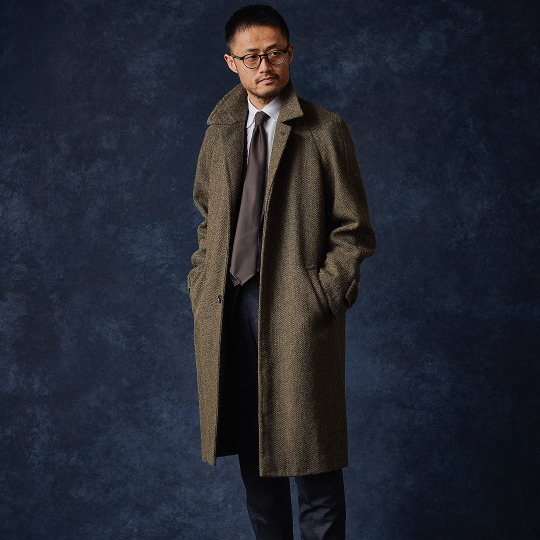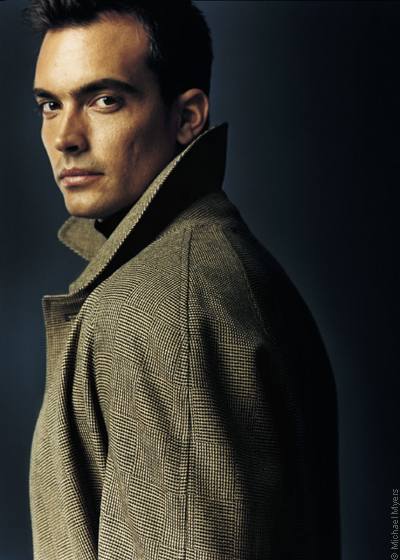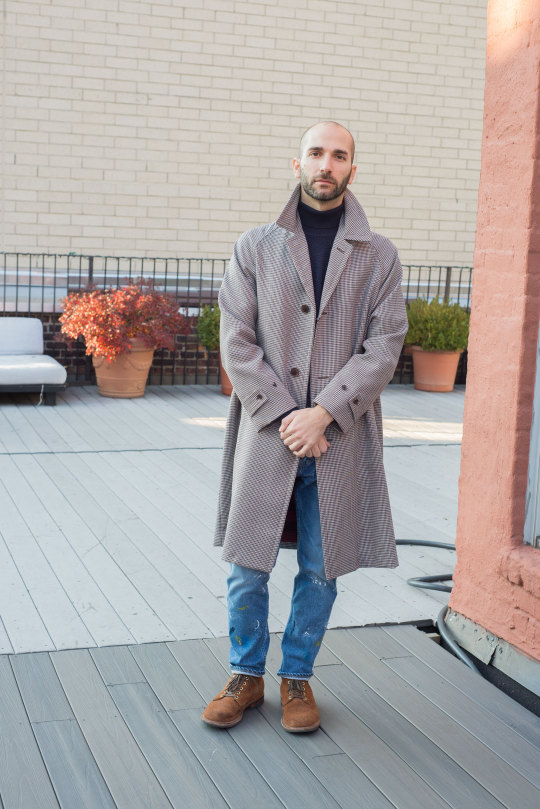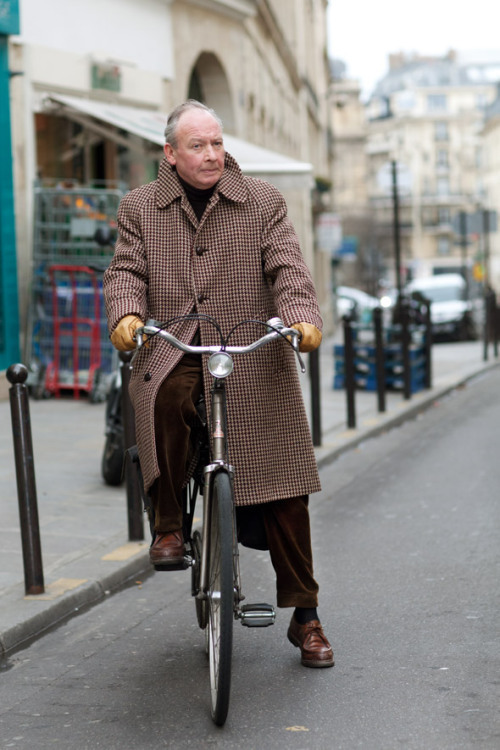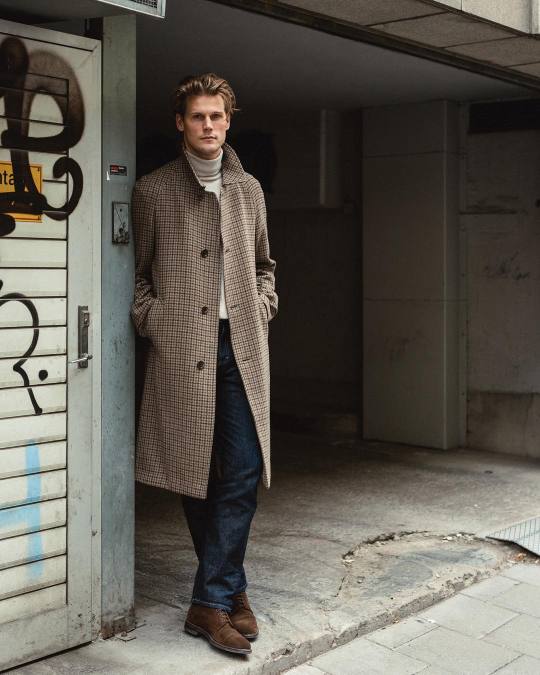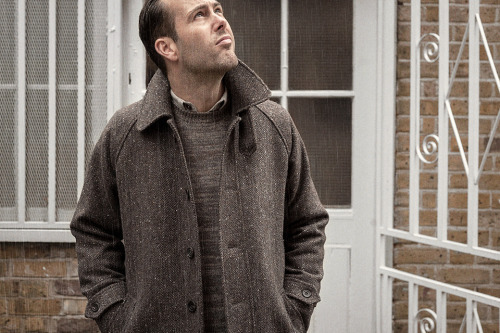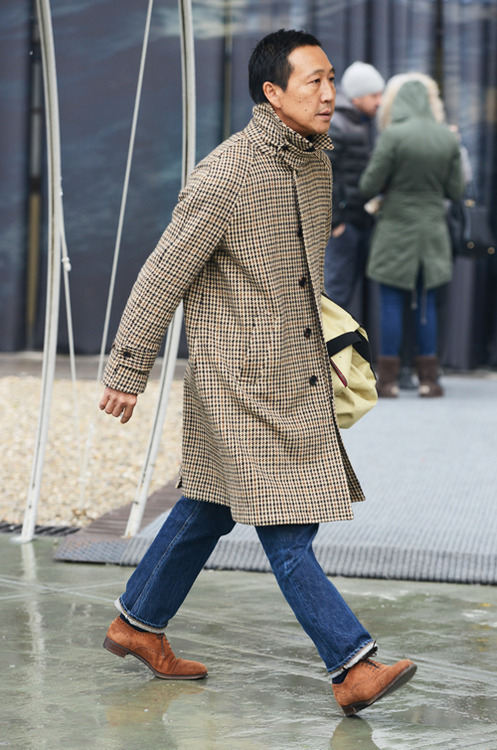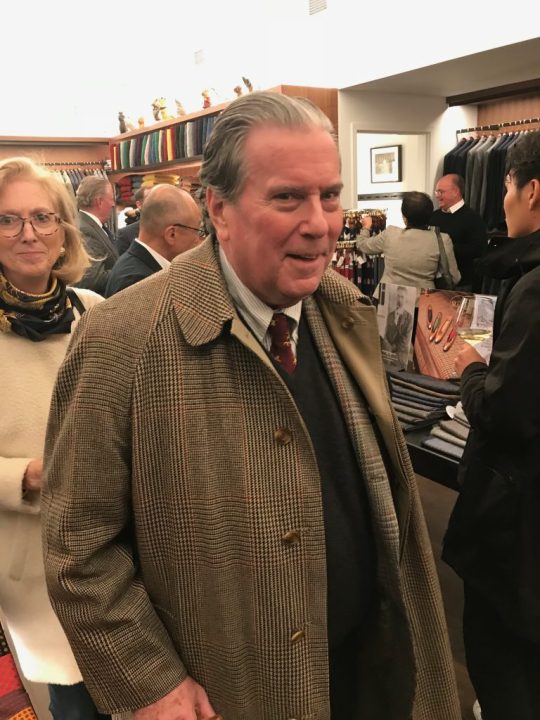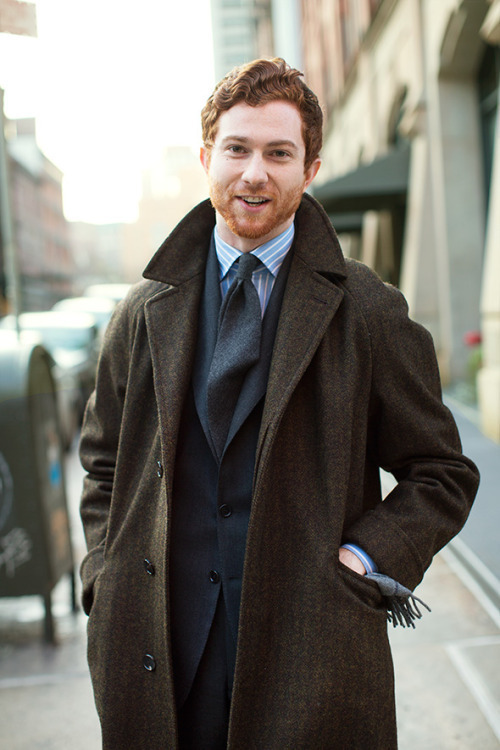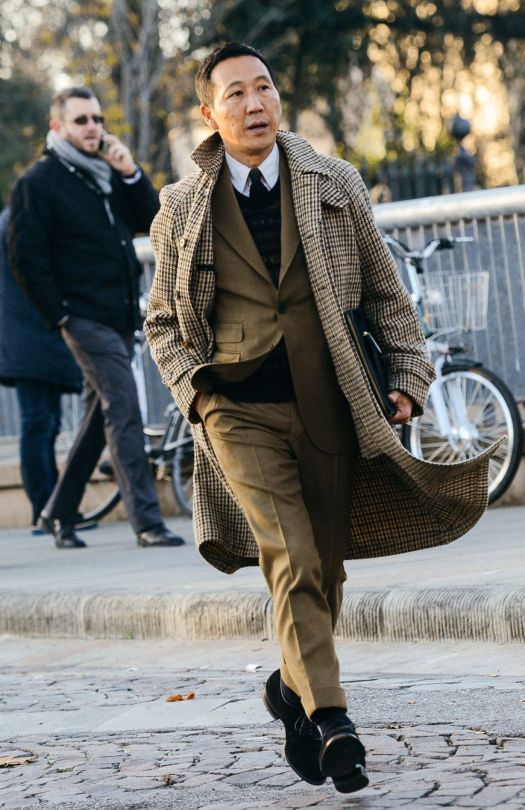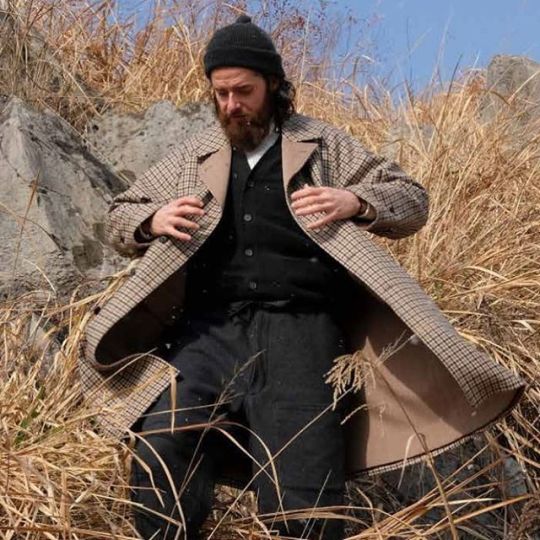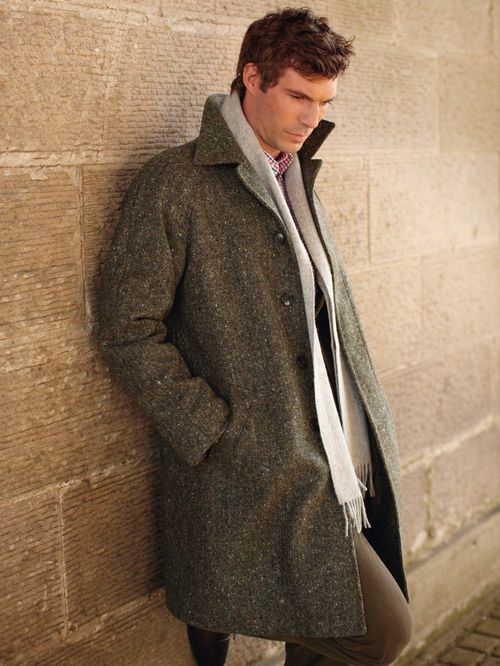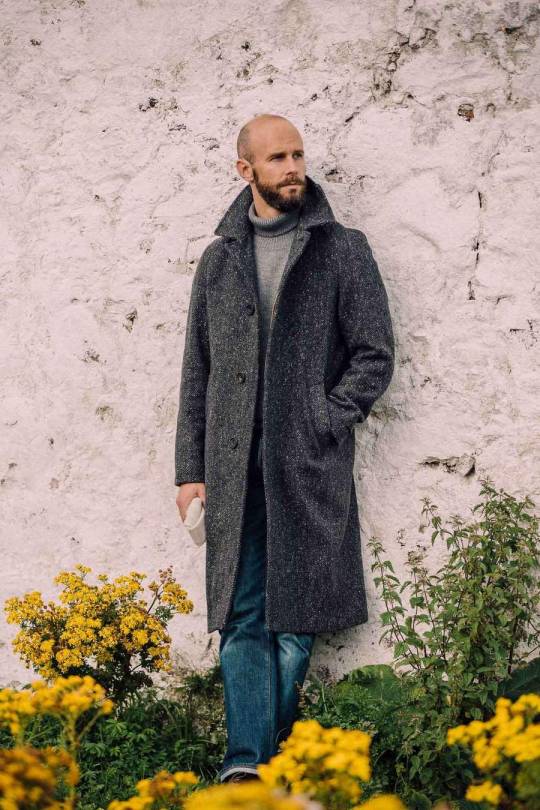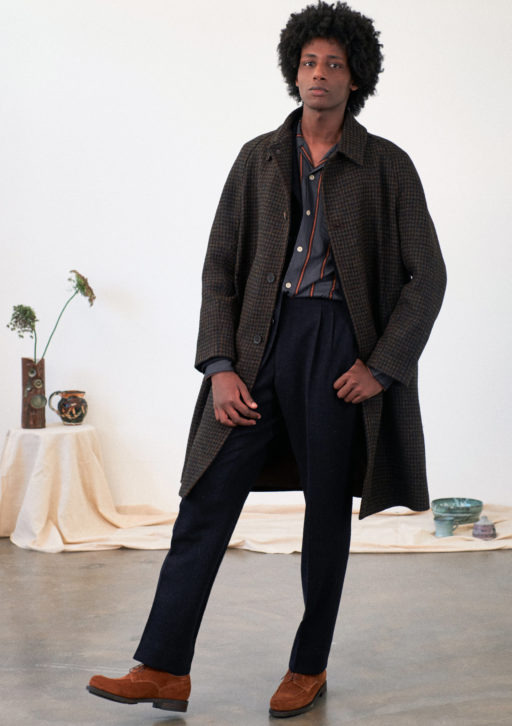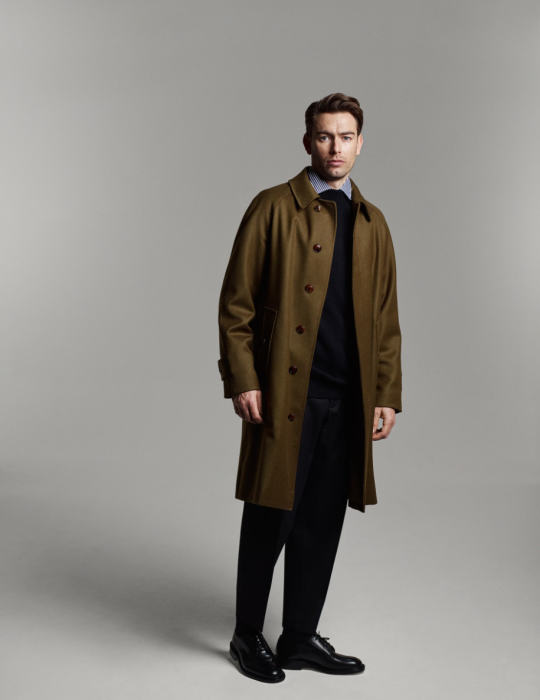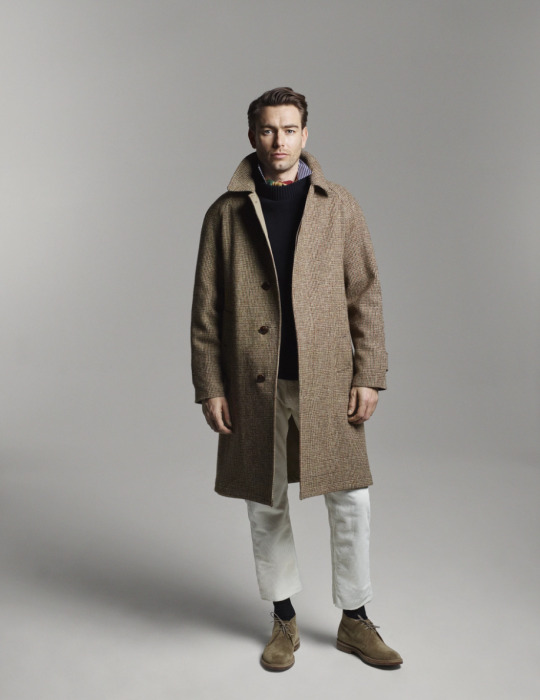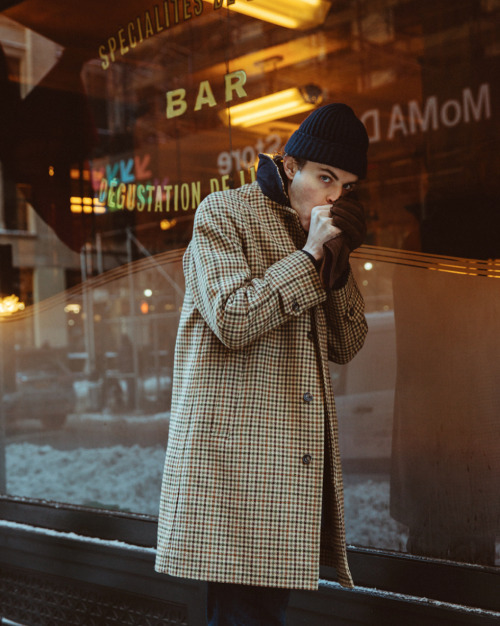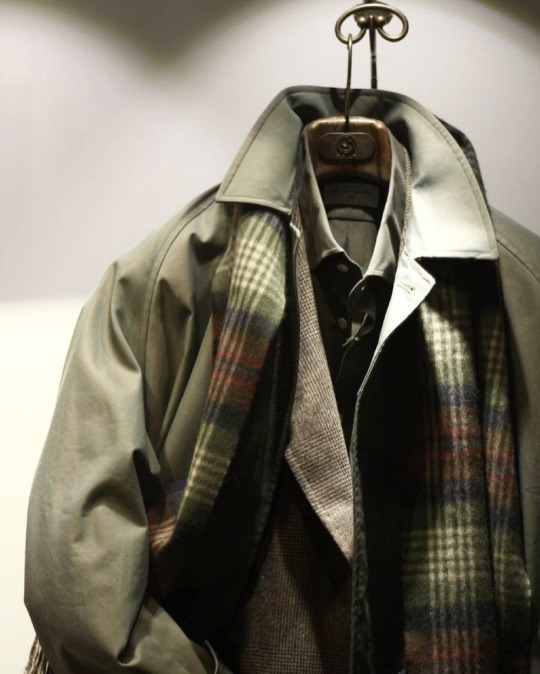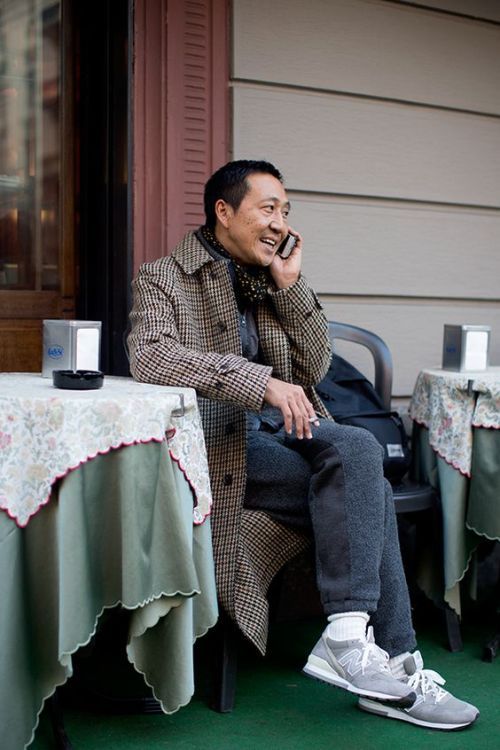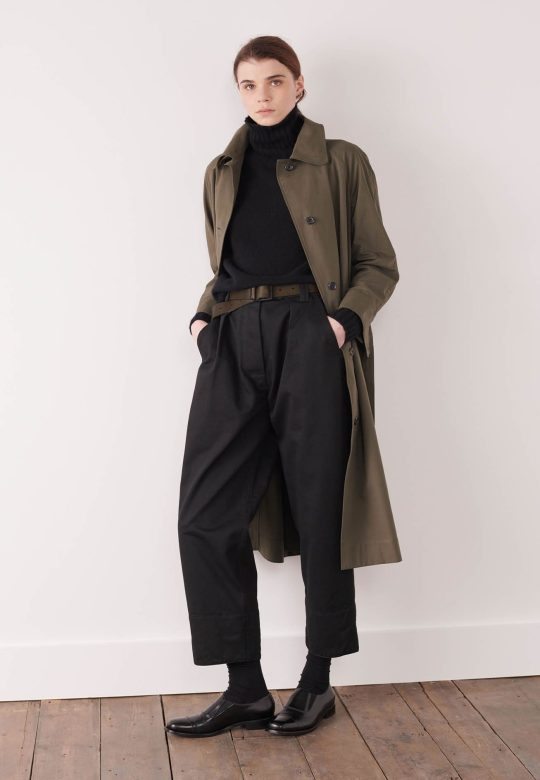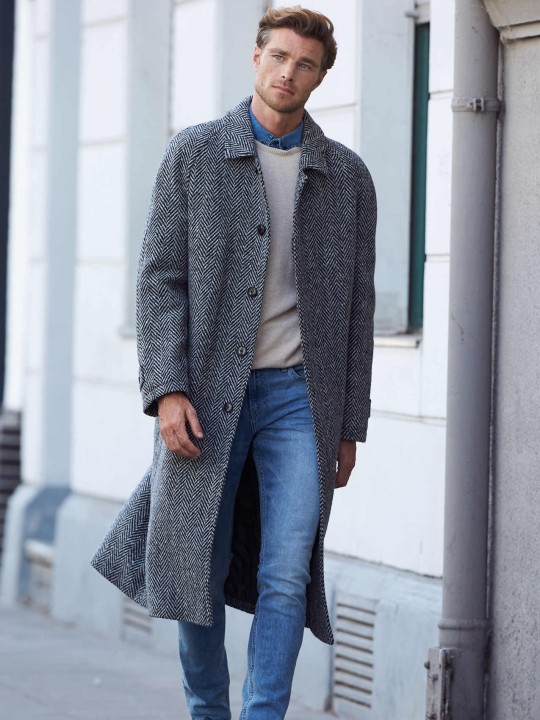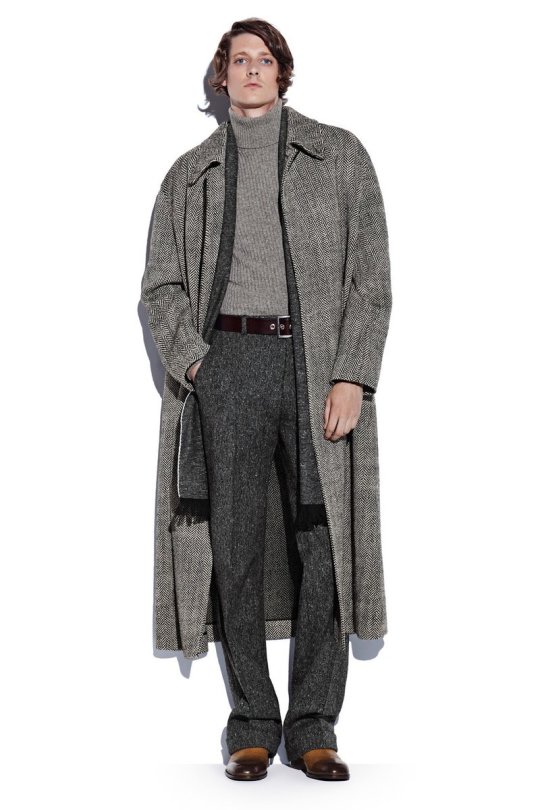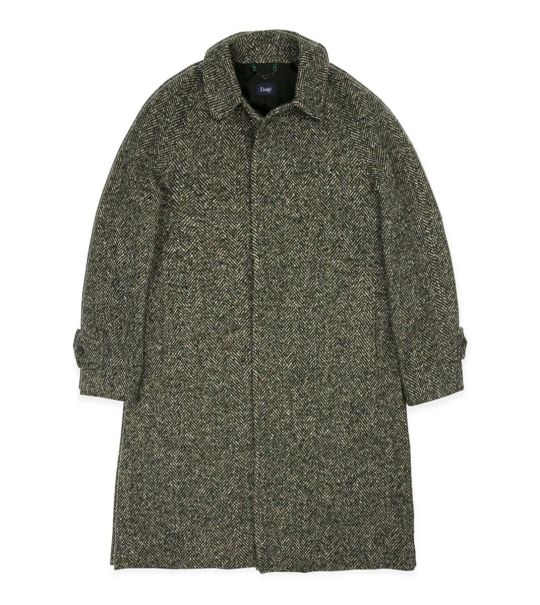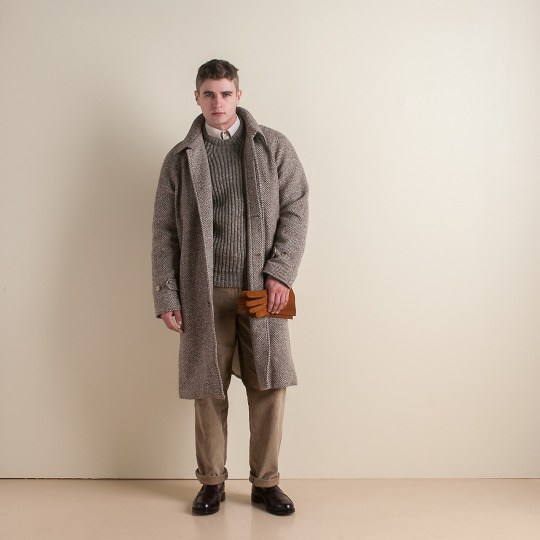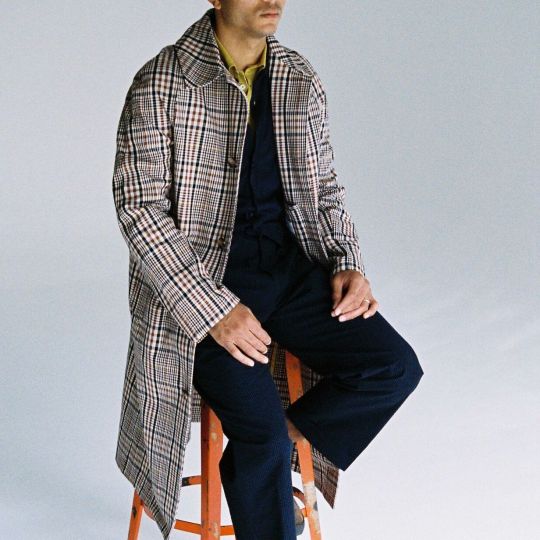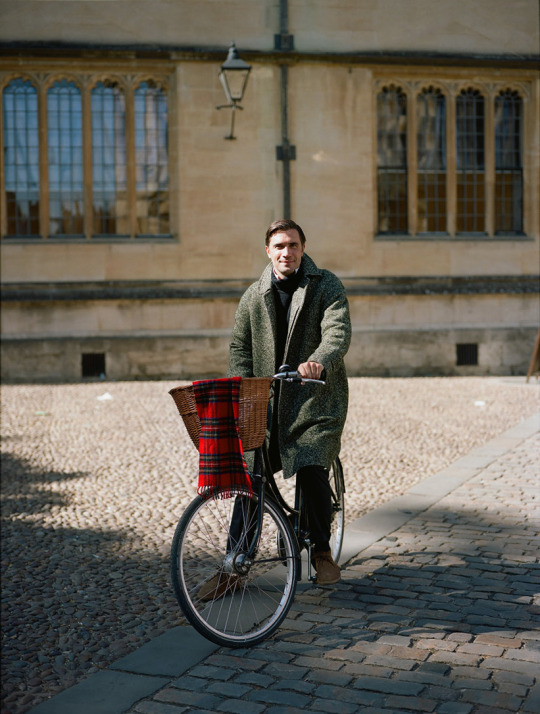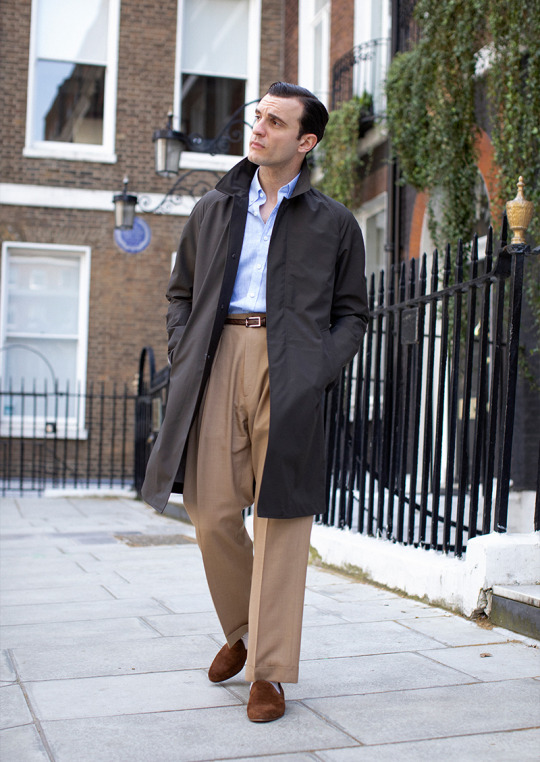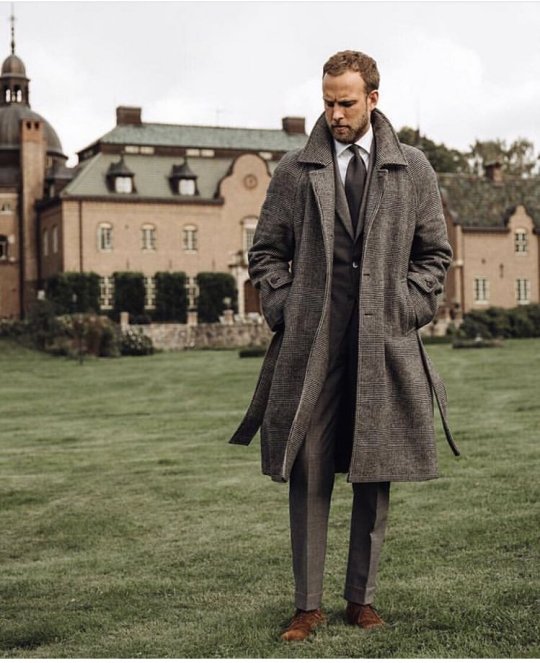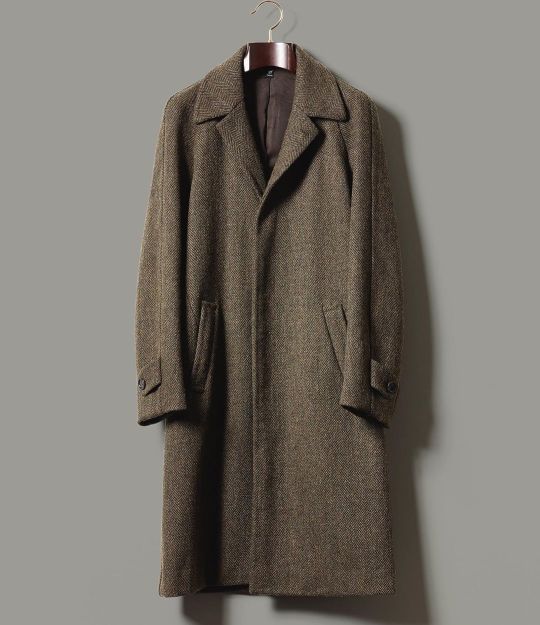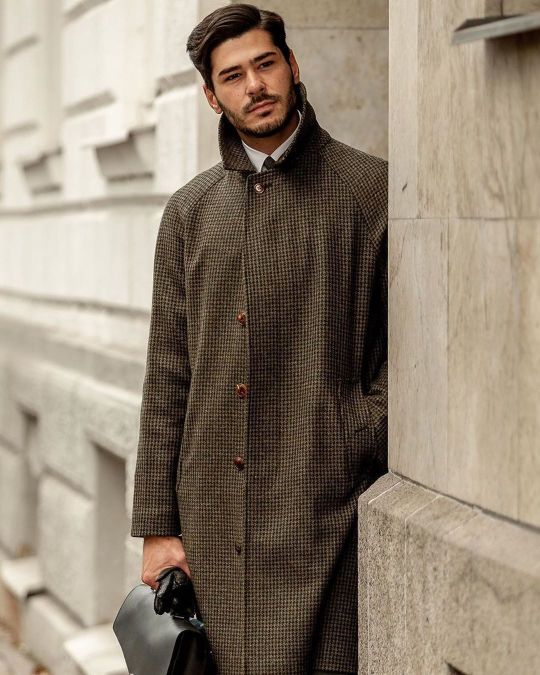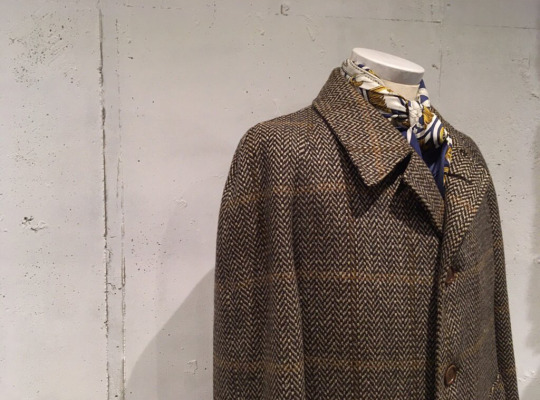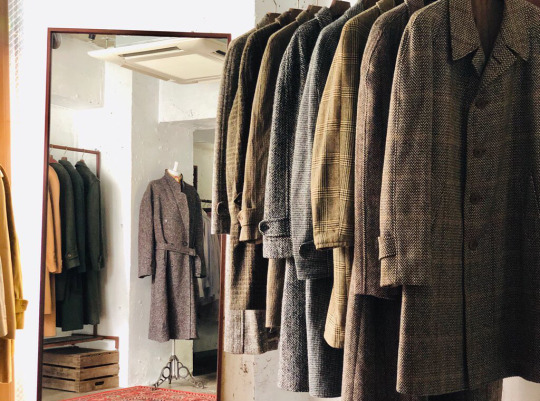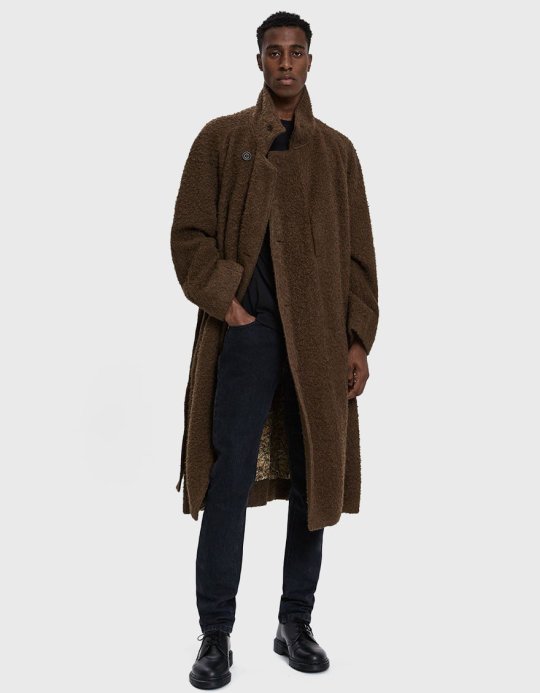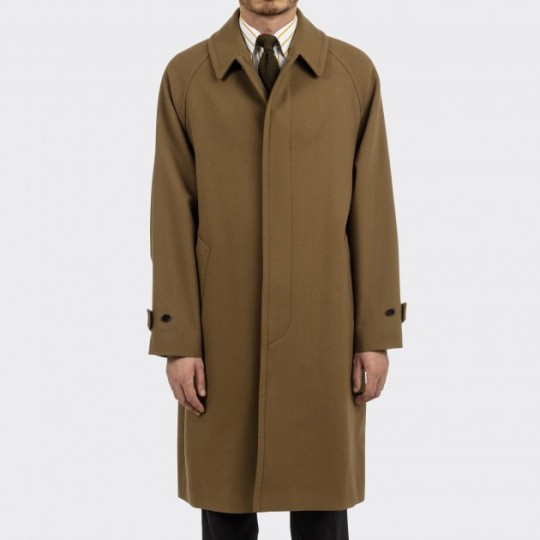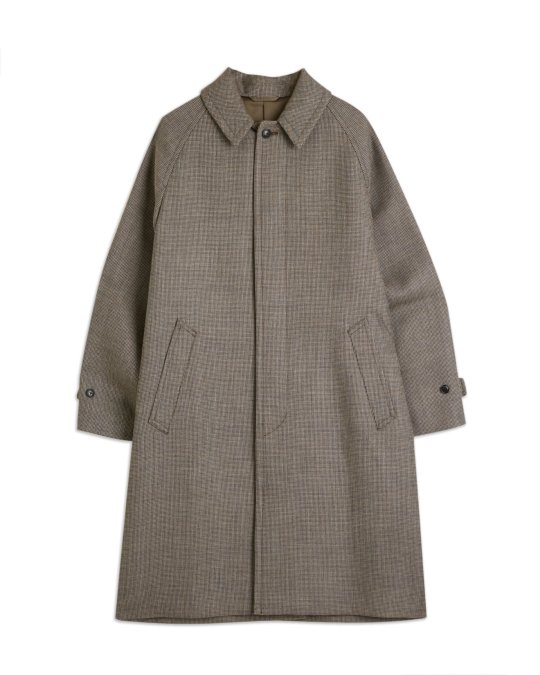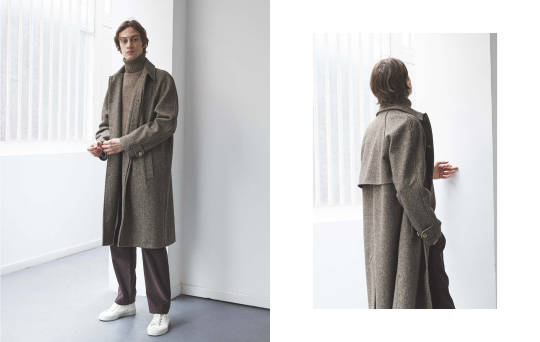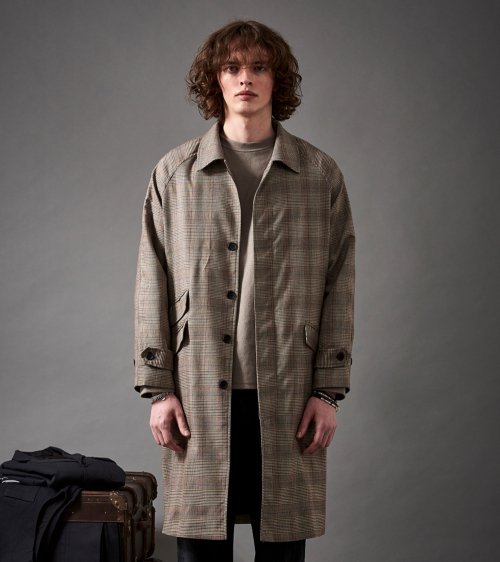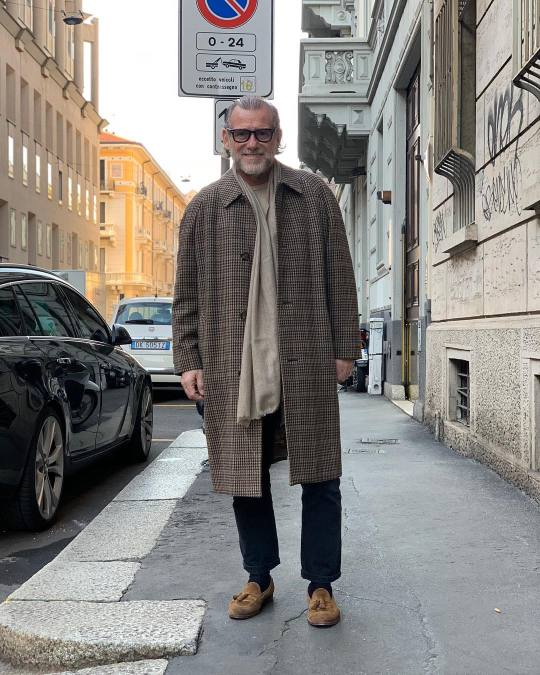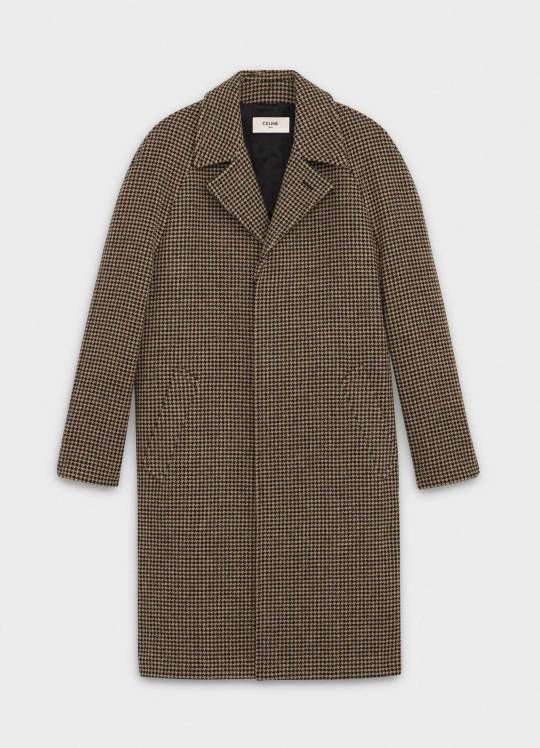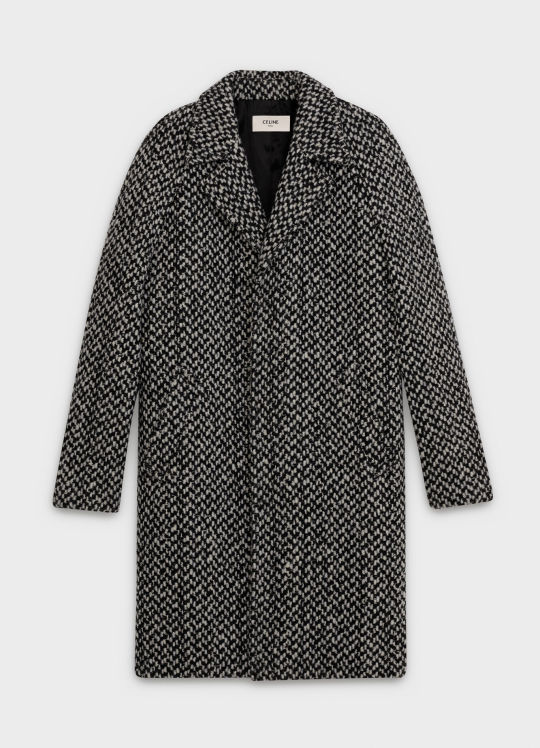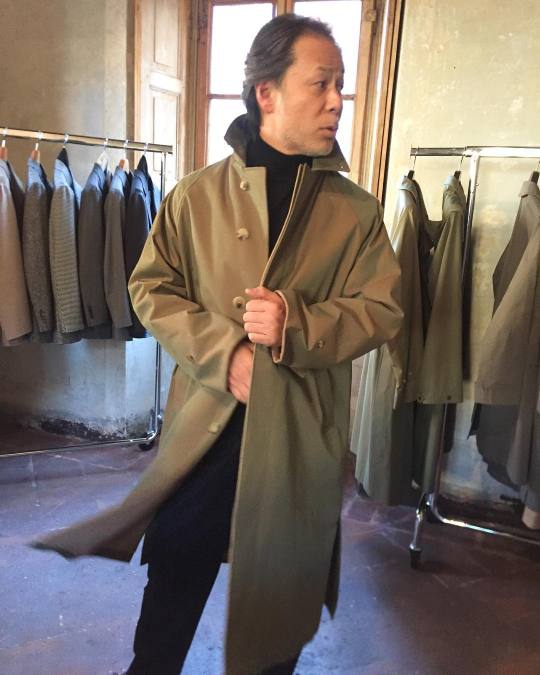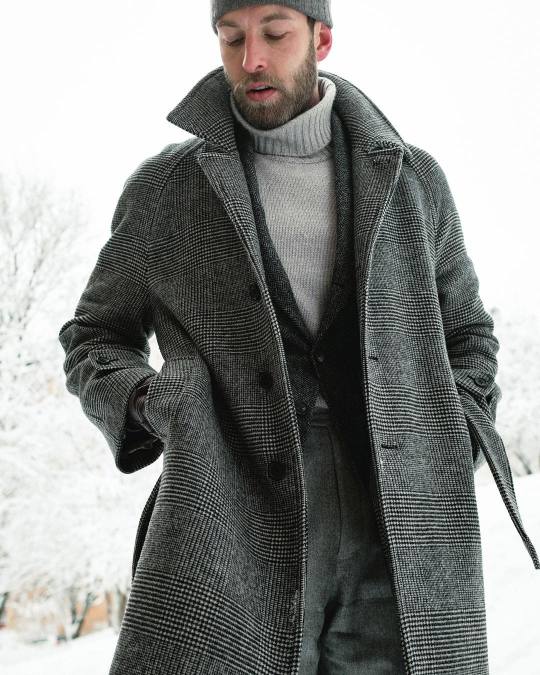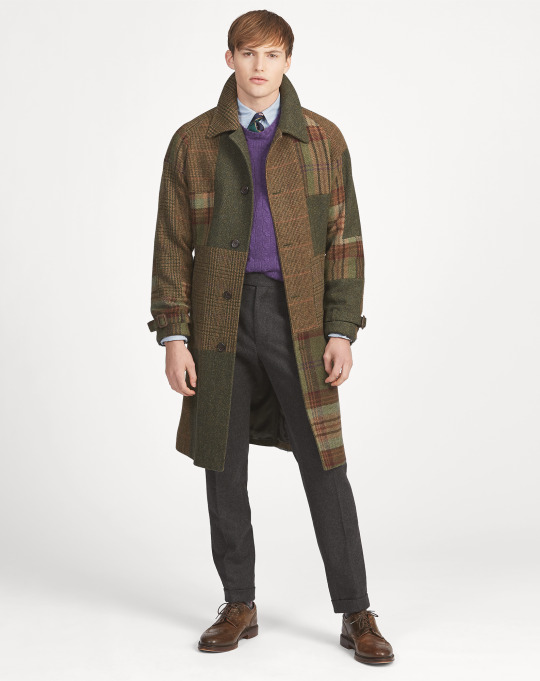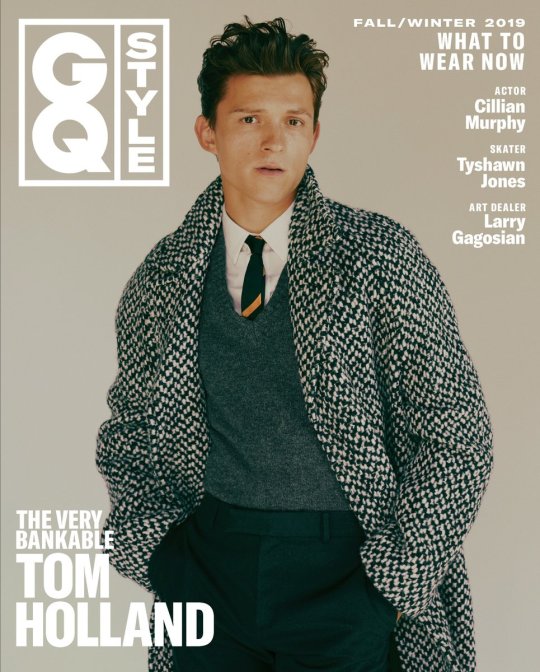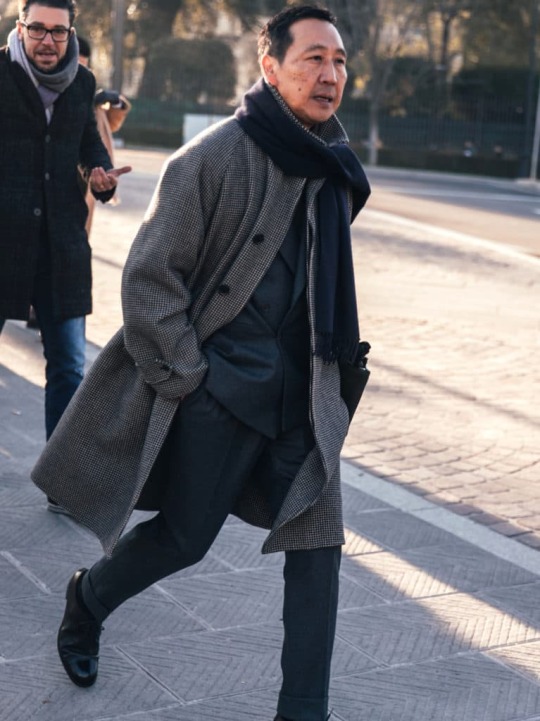
In his book Gentleman, Bernhard Roetzel opens his chapter on overcoats with an amusing observation about dress coat culture. Superficially, outerwear is designed to keep us warm and protected from the elements. But even in temperate climates, overcoats figure into people’s wardrobes because people feel a need to put things on and take them off. Dress coats are part of the language of making an entrance, a gesture that’s first communicated through old films and TV shows. There’s something romantic about shuffling a coat off your shoulders before you sit down at a bar or restaurant.
“By putting on his overcoat, a man indicates his intention to leave. By taking it off, he indicates that he has arrived,” Roetzel writes. “Only when he has been relieved of his overcoat does he begin to make his entrance. But the man who arrives without taking off his overcoat is signaling reserve, distrust, or just indecision. ‘Later the whole crowd went to a bar, where at first everybody stood around in the overcoats …’ wrote Max Frisch in Gantenbein (also known as A WIlderness of Mirrors), outlining in a few words a situation that is as yet unresolved.”
Perhaps that’s why I find raglan overcoats so appealing. In my mind, they’re like a modern version of a cape, the most dramatic of entrance clothing. I can imagine myself curling a coat’s edge between my fingers and palm, then swirling the coat behind me before it settles cleanly on my shoulders. Naturally, you’ll need to ask friends and family members to stand back, so the swirling cape — or I mean coat — doesn’t hit them in the face. If there are enemies nearby, however, give them no warning.
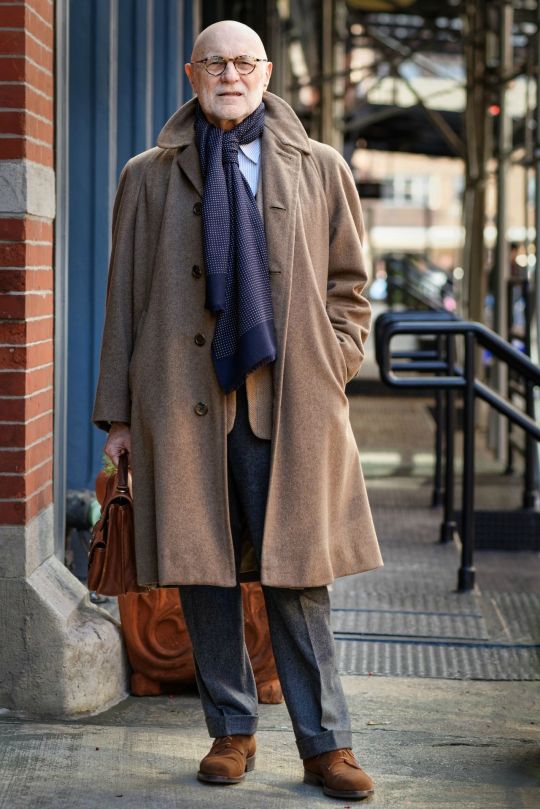
Or so goes the fantasy. As fewer men wear tailored clothing, the types of outerwear that traditionally accompanied them have disappeared too. These days, I find myself taking my dress coat off in a bar or restaurant before realizing there’s nowhere to hang one. So then I stuff it in the corner alongside me until it looks like a propped-up patron (protip: if you’re wearing a hat and some sunglasses, you can put those on top of your coat as well). Then I order my coat a drink. He likes martinis.
Without any padding or construction inside, an overcoat’s shoulder line comes down to how the tailor attaches the sleeves. Set-in sleeves are made like your sport coats or suit jackets. The sleeve is shaped as a separate piece that curves upward into the sleevehead, and then “set in” to the body through the armhole. A raglan coat, on the other hand, has sleeves that slant diagonally from the neck to the armpit, allowing it to fall like a cape.
According to lore, the style originated during the Crimean War, when FitzRoy Somerset — who was also known as Lord Raglan — was sent to Crimea to defend Constantinople and besiege the Russian port of Sevastopol. But his British soldiers suffered so severely in the terrible winter, in part owing to shortages in food and clothing, that they had to fashion supplies together to stay warm. They cut holes into their woolen blankets, pulled them over their heads, and layered them over their military uniforms. Supposedly, this is how the raglan coat pattern — closely related to the raglan cape — got its name. Lord Raglan himself died unexpectedly in 1855, suffering from anxiety during the siege, as well as dysentery and depression.
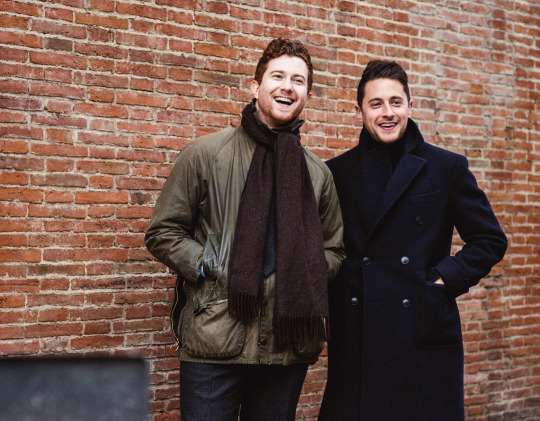

There are other ways to construct an overcoat’s shoulder line — drop shoulders and saddle shoulders among them. But the raglan is unique in how easy it is to fit over other kinds of garments. Without a defined shoulder seam, the endpoints can sit anywhere on your natural body. You can see the differences in these two types of constructions above. A raglan sleeve, such as you would find on a waxed cotton Barbour Bedale, results in a more natural and rounded silhouette. A set-in sleeve, by comparison, gives a squared-off T-shaped figure. I like and wear both; neither is better or worse. But if you like a stronger, well-defined shoulder line, that will likely be a set-in sleeve. If you want a rounder, more relaxed look, that will be a raglan.
For years, I’ve been hunting for a Balmacaan, one of the most iconic of raglan-sleeved overcoats. Named after the country estate in Scotland, Balmacaans are a long, loose-fitting style made to layer over bulky clothing. Since it was designed to keep out rain and wind, the collar can be buttoned up to the neck, and the coat’s shell is typically made from a densely woven gabardine (like you’d expect for a trench) or heavy tweed. The design is defined by its bal collar, slash pockets, and fly front. Supposedly, those raglan sleeves are also better at keeping out water than set-in designs, but I’ve always thought that was marketing speak.
Bruce Boyer has two bal coats. The first is a brown herringbone that he bought in London about thirty years ago, which he suspects was made in the same factory that produced the Royal Navy’s battleships. “It’s a ton of bulletproof tweed lined with substantial wool and perhaps a thin layer of steel sheet in-between,” he jokes. The other is a lighter weight brown cashmere model that has been endlessly reblogged (admittedly, mostly by me). The owner of Oxxford Clothes gave him that coat many years ago, which is a testament to how well classic cuts can endure. “Both coats are very roomy, more like the old steamer A-line coats of yore, like wrapping a blanket around yourself,” Bruce tells me. “They’re incredibly comfortable when you’ve got to curl up in your commuter bus seat and try to sleep on a long commute home in the evening.”
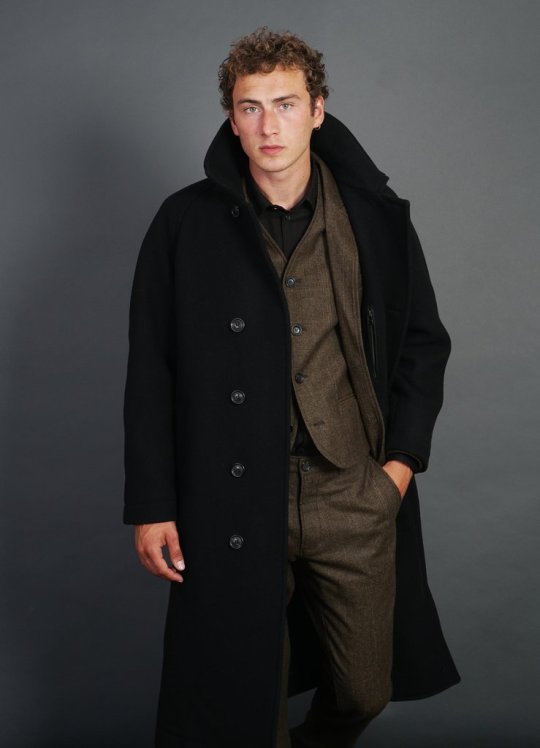
There are a few options this season. Trad shops such as Cordings and O’Connell’s are always worth a stop. Robert W. Stolz doesn’t sell Balmacaans, but their Loden coats have a similar design (e.g., raglan sleeved, single-breasted, and long). Ralph Lauren has a reversible tweed raincoat on sale at the moment. These Magee coats could have been good, but the contrast fabric at the back of the collar ruins it for me (it prevents the collar from being flipped up). One of my favorites is Kaptain Sunshine’s traveler coat, which is made from a dense Melton wool that allows the coat to hang in an A-shaped silhouette. The model will be carried at No Man Walks Alone and Namu Shop, both sponsors on this site, later this season.
I also like the classic-contemporary models from Camoshita, Private White VC, De Bonne Fracture, Drake’s, Grenfell, Fortela, and Hansen (the last one pictured directly above). The tweed coat on Yasuto Kamoshita at the very top of this post is available through Trunk Clothiers. All these coats are current without being trendy, classic without being vintage. If you’re looking for something a little more modern still, SEH Kelly, Todd Synder, Auralee, and Timothy Everest seem like they have good options. I prefer their cuts to those from APC and Beams, which are a bit too skimpy for my taste. For something with a unique surface or texture, try Mr. P, Pilgrim Surf + Supply, Ikiji, and this Aspesi available in two colors. Uniqlo U, which is designed by Christophe Lemaire, has a couple of “blocktech” poly-blend topcoats this season. They have some solid-colored raglan-sleeved raincoats, although I like the patterned set-in sleeve design a little more. Both are on sale right now for just $130.
A couple months ago, for their September issue cover, GQ Style’s editors put actor Tom Holland in an oversized, raglan-sleeved overcoat. It was layered over a deep v-neck sweater, point-collar shirt, and schoolboy tie. The coat is tweedy, slubby, and made with a broken herringbone pattern. It looks like something you could have dredged out of a dusty thrift shop, but surprisingly it’s from this season’s Celine. Hedi Slimane, who has always taken inspiration from old clothes, once ushered the slim-fit trend some 20 years ago. Today, it looks like oversized coats are the one thing men across different style genres can agree on. When cut in generous proportions and made without any defined shoulder seams, raglan-sleeved coats are easy to slip on, making them something like a cold-weather counterpart to summer’s favorite shoe.
